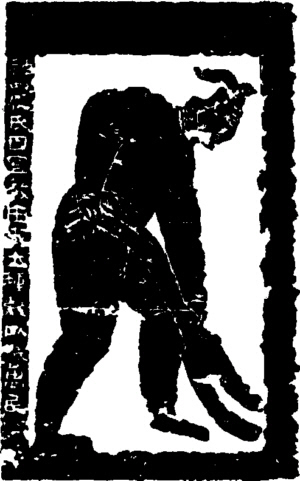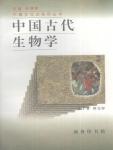Chapter 1 Chapter 1 The Origin and Development of Biological Knowledge
The colorful biological world is an important material basis for the survival and development of human beings.In the vast land of China, there are rich plant and animal resources.Since ancient times, the ancestors of the Chinese nation have worked, multiplied and lived on this fertile land.
Collecting plants and hunting wild animals were the most important ways for ancestors to obtain food in ancient times.But eating plants and hunting animals is not an easy task.Which plants or animals are edible and which are not?What do they look like?How to identify them?Where do those edible plants or animals live?To answer these questions, the morphology, classification and ecological knowledge of animals and plants have been involved.Legend has it that there was a sage in China named Shennong. In order to make the people have food to eat, he "seeked edible things, tasted the fruits of all kinds of herbs, and observed the taste of sourness and bitterness".In order to try "Hundred Herbs", he "met seventy poisons in one day".These legends reflect from one aspect the various efforts made by the ancient Chinese people to find edible weaving plants (Figure 1).They identify and taste various wild animals and plants, and gain various experiences and knowledge from them.In ancient times, when there was no writing, this kind of experience and knowledge could be passed on and accumulated through word of mouth or simple pictures.Therefore, the origin of biological knowledge can be traced back to ancient times with a long history.

Figure 1 Stone Carvings of Shennong's Han Wuliang Temple
In the Neolithic Age, based on the accumulated animal and plant knowledge, people were finally able to domesticate or cultivate some edible animals or plants in nature into domestic animals or cultivated plants that better meet human needs.Six or seven thousand years ago, millet, a gramineous plant, had been widely planted in the Yellow River Basin. In addition, cold-resistant plants such as millet, millet, and sorghum were successively cultivated by the ancient northern residents to become an important food source for human beings. .In the south, rice was first cultivated. In the Yangtze River Basin, the Taihu Lake area and the northern part of Zhejiang, rice was widely planted as early as 6,000 to 7,000 years ago.In the Zhejiang Hemudu site about 7000 years ago, a large amount of rice was unearthed as proof.In terms of animals, horses, cows, sheep, pigs, dogs, chickens, etc. are all animals that were domesticated earlier.my country is one of the earliest countries where wild boars were bred into domestic pigs. In the Hemudu site, pottery pigs were unearthed. Its shape is: short limbs, small head, drooping belly, but the front and rear are almost the same length. Today's wild boars are also like today's domestic pigs.
In the practice of developing and utilizing animal and plant resources, people have further expanded and deepened their knowledge about animals and plants.Many pottery depicting animals and plants have been unearthed from Neolithic cultural sites in various parts of my country.There is a picture of the sun and plants on the outer wall of a pottery pot unearthed in the Xindian cultural site. In the middle of the painting is a cotyledon of a plant that has just been unearthed. On both sides of the cotyledon, there are two suns shining with sunlight.The picture clearly reflects people's understanding of the importance of the relationship between sunlight and plant growth and development at that time (Figure 2).On a 5,000-year-old colored pottery unearthed in Linruyan Village, Henan Province, there is a picture of a stork holding a fish. This picture of a stork and fish clearly reflects the ancient people's understanding of the shape and living habits of storks. understanding.The above facts show that the traditional biological knowledge in ancient China had been conceived and germinated as early as the primitive society period.

Figure 2. Sun plants unearthed from the Xindian cultural site
During the Shang and Zhou dynasties, biological knowledge gained preliminary development.The emergence and development of writing created favorable conditions for the accumulation and development of biological knowledge.There are a large number of descriptions and records about animals and plants in oracle bone inscriptions and Chinese scriptures, reflecting the rich knowledge about the morphology, classification and ecological habits of animals and plants in early ancient my country.The Spring and Autumn Period and the Warring States Period were important periods for the development of traditional biology.The first is to have a deeper and wider understanding of the diversity of animals and plants, and the concept of systematic classification of animals and plants has emerged.
During the Qin, Han, Wei, Jin, Southern and Northern Dynasties, due to the needs of the development of agriculture, animal husbandry, horticulture and medical production, the investigation and research on economic animals and plants were greatly promoted.Medicine treatment has a long history in our country, and there are a wide variety of animals and plants in nature, which are the most important medicine resources.In the works of the pre-Qin period, many medicinal plants and animals have been mentioned.In ancient times, the writings that recorded medicines were called Materia Medica.It summarizes the experience of using medicine to treat diseases before the Qin and Han Dynasties, and is the earliest book on Chinese herbal medicine that records medicine.It mainly records the names, living environment and medicinal value of medicinal plants and animals.During this period, in addition to the summary research on medicinal plants and animals, there were also works such as Liang Taohongjing's "Shen Nong's Materia Medica Collection Notes".Since then, herbalism, which studies medicinal plants and animals, has become the mainstream of traditional Chinese biological research.In addition to Materia Medica, the results of research on economic animals and plants are also reflected in agricultural books (such as Jia Sixie's "Qi Min Yao Shu"), various monographs recording agricultural animals and plants (such as Dai Kaizhi's "Bamboo Book") and various records. In the "Zhi" books of local animals and plants (such as Ji Han's "Southern Vegetation and Trees" and Shen Ying's "Linhai Soil and Foreign Objects").The emergence and development of such works have an important impact on the development of traditional biology.
In addition, the research on the animals and plants contained in "Erya" during this period also promoted the development of biology from another aspect.Lu Ji of the Three Kingdoms "Mao Poems Vegetation, Trees, Birds, Animals, Insects, and Fish" and Jin Guopu's "Erya Notes" have achieved certain results in the textual research and classification of the names and facts of animals and plants. big impact.
From the Sui and Tang Dynasties to the Song and Yuan Dynasties, the research on medicinal plants and animals has achieved brilliant results, and produced works such as "Tang Materia Medica" (compiled by Su Jing, etc.), "Tu Jing Materia Medica" (compiled by Su Song), "Zheng Lei Materia Medica" (written by Tang Shenwei) ) and many other large-scale comprehensive herbal works.These works, based on the work of predecessors, not only greatly increased the types of medicinal plants and animals, but also provided more detailed descriptions of the names, forms, classifications, living habits, and places of origin of various plants and animals.The publication of these works not only enriched the medical knowledge of the motherland, but also raised the traditional study of animal and plant taxonomy in our country to a new level.During this period, the research on agricultural animals and plants became more extensive and in-depth, and a large number of special books recording a certain type or a certain kind of animals or plants emerged.From the Sui and Tang Dynasties to the Ming and Qing Dynasties, research on a certain type of animal or plant was carried out and a special book was written. In terms of animals, there are birds, beasts, insects (including invertebrates and some reptiles), fish, and in terms of plants, there are grains, Vegetables, melons, wild vegetables, fruits, trees, grains, grasses, flowers, moss, etc.Research and write monographs on certain animals or plants. Animals include: horses, cattle, camels, dogs, cats, mice, orangutans, lions, tigers, pigeons, eagles, cranes, swallows, quails, yellow birds, Thrush, dragon, snake, toad, goldfish, crab, cassia, silkworm, wild silkworm, bee, butterfly, cicada, locust, cricket, etc.; plants include: rice, yam, sweet potato, sesame, tea, tobacco, poppy, hemp , cotton, indigo, cattail, mugwort, ginseng, sealwort, Polygonum multiflorum, aconite, laurel (lauraceae), osmanthus (Oceanaceae), agarwood, taro, turnip, ladle, peach, plum, plum, cherry, crabapple, jujube, Tangerine, lychee, longan, banana, coconut, olive, grape, betel nut, tung, cypress, camphor, mulberry, elm, bamboo, bamboo shoot, peony, peony, viburnum, camellia, azalea, rose, Lichun, chrysanthemum, chamomile , Impatiens, Cockscomb, Xuan, Lan, Hui, Dianthus, Hibiscus, Calamus, Ping, Zhi, Fungus (mushroom) and so on.In the Song Dynasty, the research on the animals and plants recorded in "Erya" became an integral part of traditional biology.Lu Dian's "Pi〔PI〕Ya" and Luo Yuan's "Eryayi" are no longer simply books explaining the meaning of words.For example, "Erya Yi" has 32 volumes, which are divided into categories. It is a special book dedicated to studying the names (correct names, aliases), morphology, and physiology (growth and development or living habits) of various animals and plants.These works, in addition to being diligent in textual research, also pay attention to personal experience, so many expositions are better than those of the predecessors.
During the Ming and Qing dynasties, my country's traditional animal and plant classification research reached its peak.Zhu Huan (su Su) recorded 414 species of plants in "Rescue Famine Materia Medica".Different from previous materia medica, the description of each plant in "Rescue Famine Materia Medica" is derived from the experimental research and actual observation of each plant, and an accurate sketch is attached to each plant.Li Shizhen collected the culmination of the research on medicinal plants and animals in the past dynasties.It has 16 parts as the outline and 60 categories as the order.There is a purpose under the class, and there is a clear classification level.Wu Qijun (jun Jun)'s "Plant Names and Facts of Plants" not only contains more types of plants, but also begins to get rid of the purely practical frame and change to the direction of pure botany.
Beginning in the 1850s, modern western biological knowledge was gradually introduced into China.From then on, Chinese biological research began to break through the traditional exegesis, annotation, and the practical framework of medicine and agriculture, and turned to the research of biological systems based on experimental observations.

Figure 1 Stone Carvings of Shennong's Han Wuliang Temple

Figure 2. Sun plants unearthed from the Xindian cultural site

